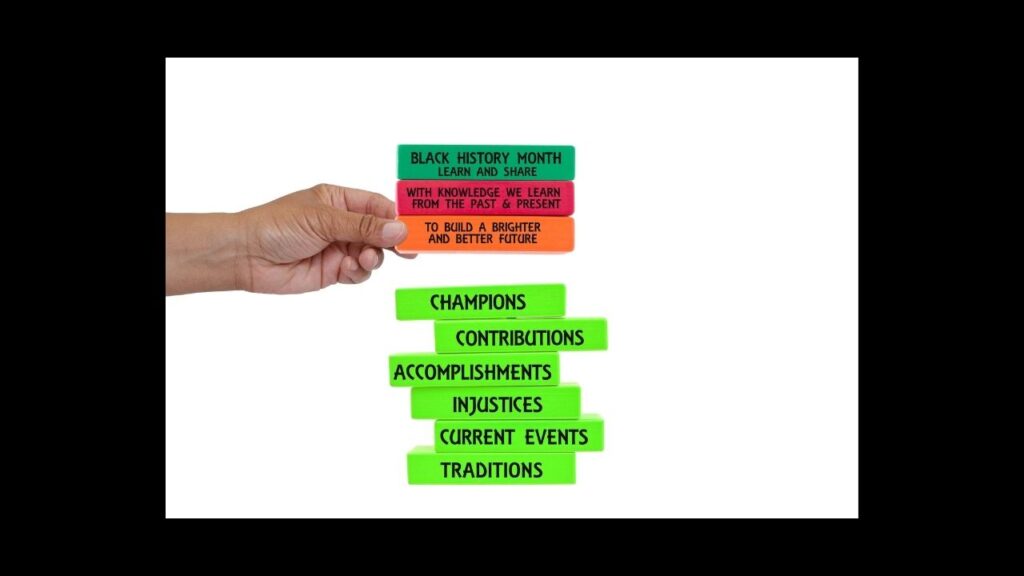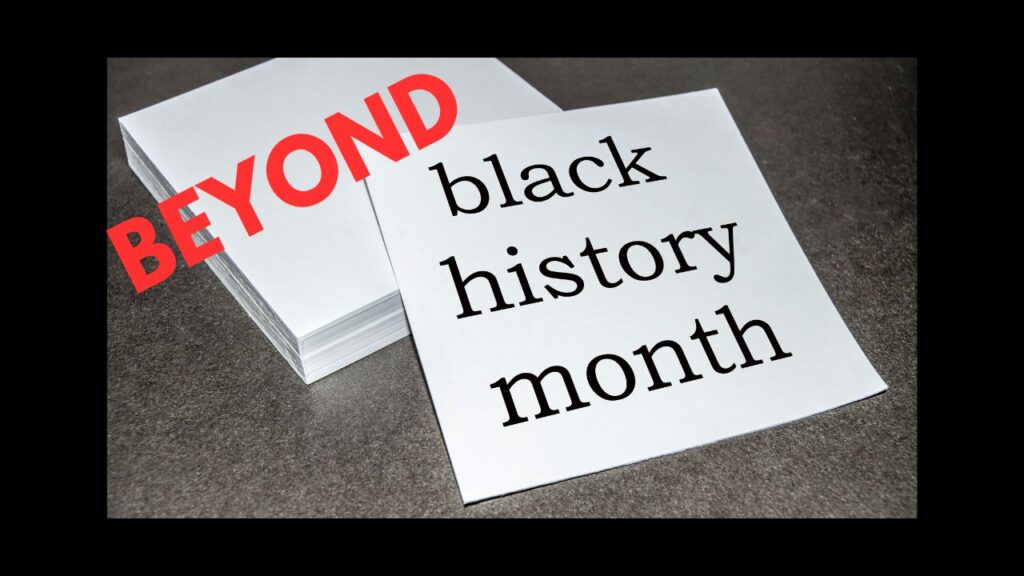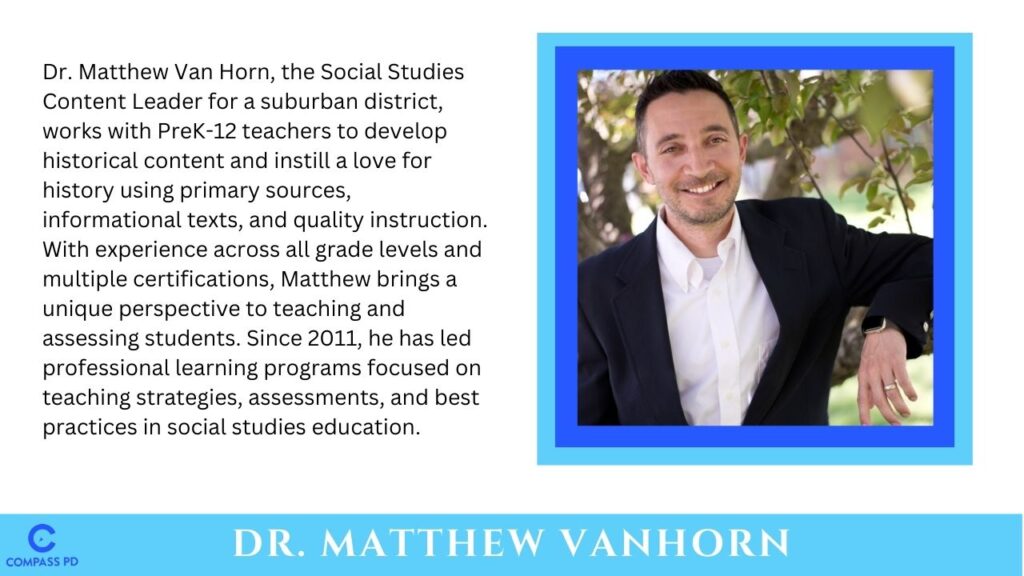Understanding, Celebrating, Fostering: Commemorating Black History Month with Purpose and Impact
By Dr. Matt VanHorn
“Success is to be measured not so much by the position that one has reached in life as by the obstacles which he has overcome while trying to succeed.”
– Booker T. Washington, author and politician
Having served in the classroom for over the past twenty years, this quote reminds me daily to celebrate our own and our students’ efforts, resilience, and progress rather than solely focusing on grades or end results. In our classroom and in their lives, students will face many obstacles—whether academic, personal, or societal—and recognizing their perseverance encourages a growth mindset. By creating an inclusive environment in our classrooms where all students feel valued for their unique journeys and challenges, we can help students learn resilience.
During Black History Month, this quote takes on even greater significance. It can be used as a powerful teaching tool to discuss the barriers African Americans have historically faced and overcome on their paths to success. By highlighting stories of resilience from Black leaders like Booker T. Washington, educators can inspire students to appreciate the value of persistence and determination.
Black History Month is a dedicated time when the United States celebrates and recognizes the accomplishments and legacies of Black Americans throughout history, highlighting their effects on the country’s culture and community. It’s a time to learn about important figures like Martin Luther King Jr. and Rosa Parks but also the countless others who have struggled for the right to vote, to free speech, to fair and equal treatment, etc.
Teachers play a crucial role in fostering an inclusive understanding of history and culture. To establish an inclusive environment for all students in our classrooms, we must provide an accurate understanding of history’s celebrations and challenges of African Americans who have overcome adversity to gain citizenship and opportunities. While this indeed looks different at different ages, it provides us a time to educate ourselves and others about Black history, raise awareness about ongoing issues that the Black community faces, and encourage our students to look at how we can learn from these examples and experiences to create a better future.
Why Black History Month Matters
First beginning in 1926 as a week-long celebration and later expanding in the 1970s to become a dedicated month-long recognition, Black History Month has become a time to concentrate on the accomplishments and achievements of African Americans. Since 1996, our presidents have issued proclamations and themes with pomp and circumstance, spotlighting these events once a year. While well-meaning and filled with good intent, the significance of African Americans’ accomplishments and ongoing struggles should not be confined to one month of the year.
Celebrating Black History Month can promote cultural awareness. It highlights the contributions, history, and achievements of Black individuals and communities throughout history and provides an opportunity to educate others about the rich and diverse cultural heritage of Black Americans, as well as the struggles and triumphs they have experienced. By learning about these stories, people can understand how different cultures have shaped society, fostering empathy and appreciation for diversity at any level. For many students who too often fail to see themselves in classroom instruction and examples, we can foster student engagement and belonging.

Common Challenges and How to Overcome Them
In our classrooms, we face daily a barrage of boxes to check. Formative and summative assessments, benchmarks, mandates, and commemorations fill our planbooks and lessons. While it may feel like a directive and yet another topic to cover, the study of African American history is part of the collective story of the American experience. When we allow all voices and experiences to be heard and seen in our instruction, we can better see the full story of America’s history. By incorporating these diverse perspectives, struggles, and achievements in all content areas, we can better see the complete picture of our past.
Practical Approaches to Teaching Black History
Purposefully integrating Black history into curricula can be meaningful and engaging by using practical approaches. It is often left to social studies teachers to share events like enslavement, the Civil War, Reconstruction, and the Civil Rights Movement. Still, the contributions of countless African Americans can be integrated into any curriculum’s existing units.Bringing in local and regional history allows students to learn about lesser-known stories, figures, and events beyond the Civil Rights Movement. Here are some strategies to make teaching Black history meaningful and engaging:
- Collaborate with colleagues: Share content such as movements like the Harlem Renaissance or music as a reflection of societal change.
- Connect historical topics to current events: Highlight the ongoing relevance of Black history by tying past struggles and achievements to contemporary movements.
- Feature notable trailblazers: Showcase African American scientists, mathematicians, authors, musicians, actors, athletes, and more to represent diverse fields.
- Incorporate primary sources: Use letters, speeches, photographs, and media clips to provide students with firsthand perspectives. Online resources like the Library of Congress or the National Museum of African American History and Culture are invaluable for this.
- Encourage student-driven projects: Allow students to choose topics related to Black history that resonate with them for research projects, art exhibits, or oral histories. These activities not only engage students but also teach research and presentation skills.
- Partner with the community: Collaborate with local organizations, invite guest speakers, or hold events such as movie nights and cultural celebrations to foster an inclusive environment.

Beyond February
Black History Month addresses the traditional underrepresentation of Black stories, voices, and contributions in mainstream curricula; it also creates opportunities for students to learn about figures, events, and movements that have shaped history but are often overlooked. We should be sourcing diverse resources and examples daily to show the multiple viewpoints of our content. All students should see themselves in the stories of resilience, creativity, and leadership, fostering pride and a sense of belonging. As educators, our continued self-reflection on our practices reinforces the importance of continuous growth.
Conclusion
As we honor the accomplishments and contributions of Black Americans during this month, it is important to remember that Black history is not just something to learn about but something to act on. In the words of Booker T. Washington, “The world cares very little what you or I know, but it does care a great deal about what you or I do.” The impact we make through our actions—large or small—creates the lasting change that shapes our future. Let us not only reflect but also act, ensuring that the legacy of Black history continues to inspire progress and transformation for all students.
References
Smithsonian National Museum of African American History and Culture. (n.d.). Celebrating Black History Month. Retrieved January 10, 2025, from https://nmaahc.si.edu/explore/stories/celebrating-black-history-monthWashington, Booker T. Up from Slavery. Dover Publications, 1995.

